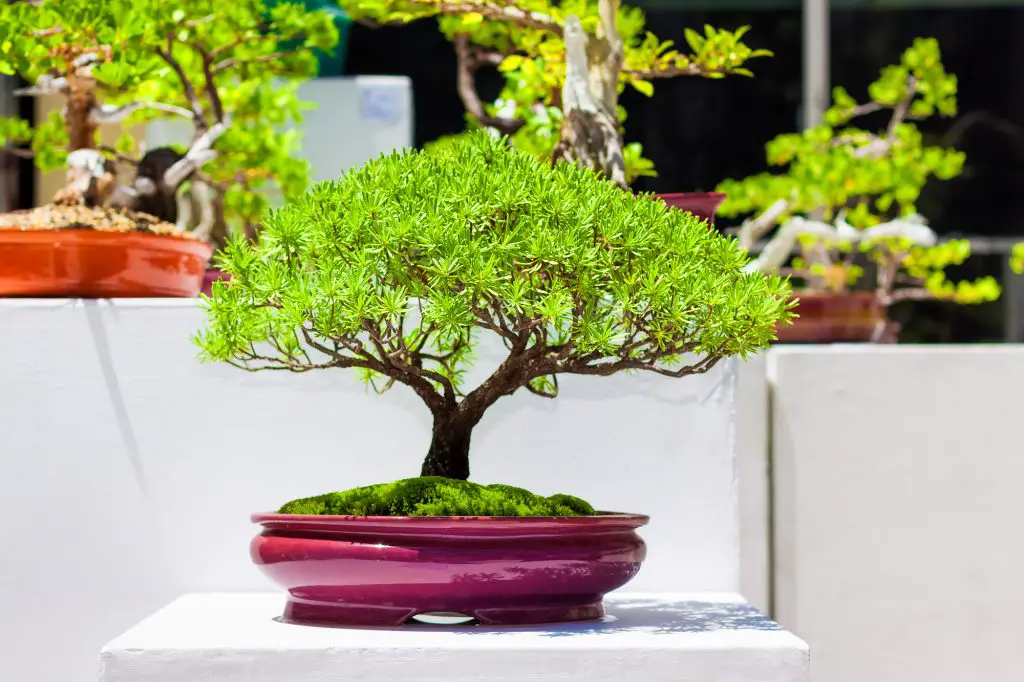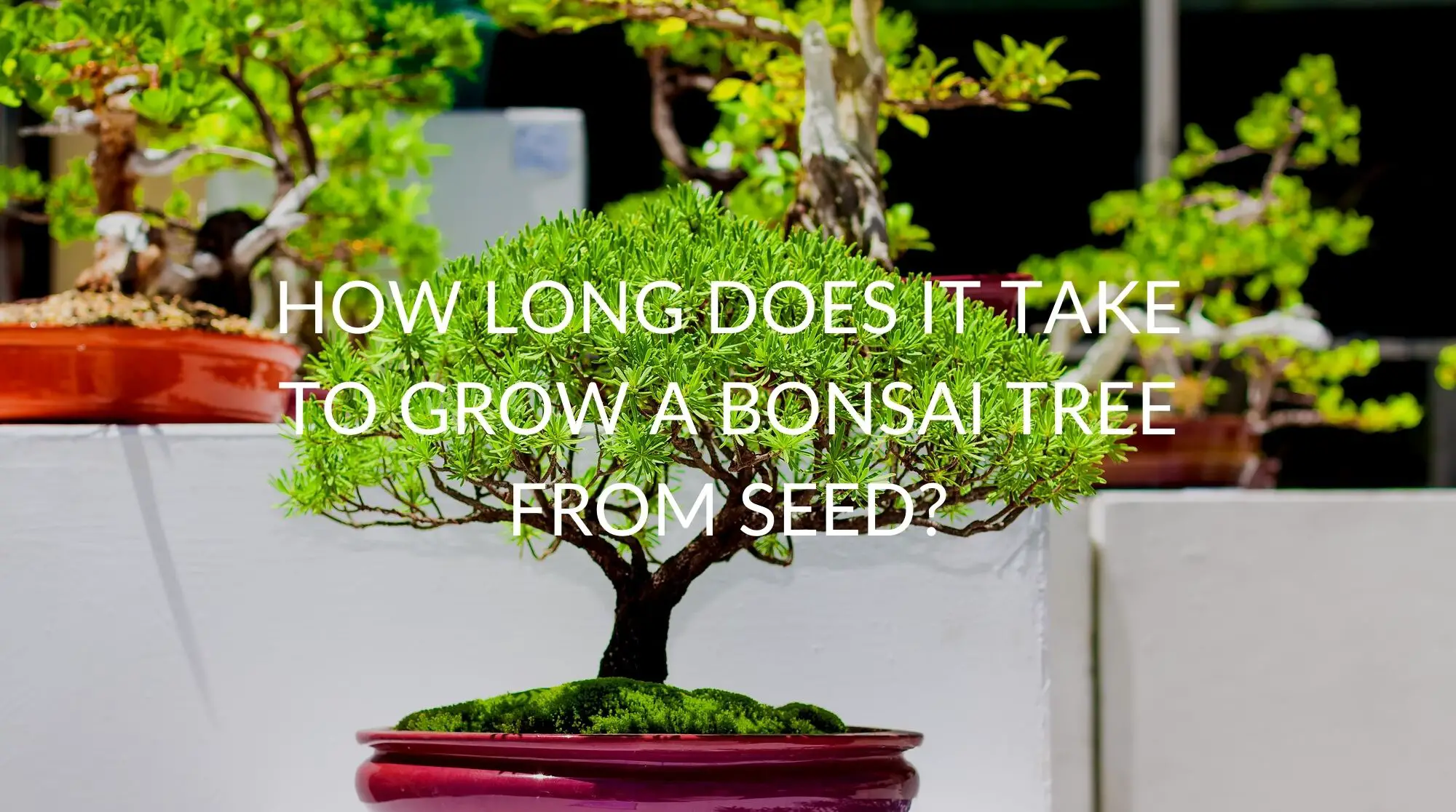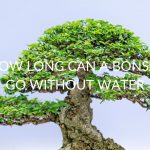Depending on the species, it may take 2-3 years to grow saplings large enough to initially prune and wire. Due to the fact that Bonsai grow in very small pots that limit their rate of growth, It may take 10 years or more to style your tree into the shape you desire.
Growing Bonsai is an art of patience. If you want a hobby with quick results, Bonsai is not for you. If you are intrigued by the idea of slowly crafting your tree over many years, growing Bonsai from seed can be very rewarding.
One can also grow Bonsai from existing trees or shrubs or grow saplings from cuttings. These methods are faster than growing a Bonsai from seed. However, if you start from seed, it can be very gratifying to know you grew your Bonsai from the very start.
In addition, you can grow Bonsai from seeds you find in your own local environment, which will be naturally suited to your growing conditions.
Read on for more information about how to grow your Bonsai from seed.
How Long Will it Take to Grow My Bonsai from Seed?
You can plant several seeds in one pot in Bonsai soil. These seeds will take around a year to become tiny saplings, which means they will have a small root system and some foliage.
After another year or so of growth, many saplings can withstand some initial pruning and some wiring as needed.
After 3-5 years, you will start to style your tree into the design you wish, though you may not achieve the ideal look until much later.
Is It Hard To Grow A Bonsai Tree From Seed?
Bonsai is not an easy hobby, and you should be prepared to do research, be patient, get to know your tree, and lose some saplings. This is true whether you are starting trees from seed or not.
However, if you are curious about growing Bonsai from seeds, why not try it? All it takes is some minimal equipment and some seeds. You may find you enjoy the slower pace of Bonsai.

How To Grow Bonsai From Seed
If you are growing outdoor Bonsai, the best time to plant Bonsai seeds is late fall, so the seeds have a full cold season before they sprout in the spring. If you are going to wait until spring to plant your trees, try to leave your seeds outdoors over the winter so they can acclimatize.
Choose your Seeds
Collecting seeds from trees in your local environment can be a great way to grow a tree that is ideally suited to your climate. Keep in mind that evergreen and deciduous Bonsai do best when grown outdoors or in greenhouses.
If you choose a tree specie that already thrives in your local climate, you will be better able to provide the ideal conditions for your tree.
You can walk through your local woods and find seeds from any trees you like. If you pick up pine cones, you can put the cones in a warm place to get them to release the seeds.
If you do not want to grow Bonsai from local seeds, you can also purchase seeds at Bonsai nurseries or garden shops. Bonsai trees are grown from regular trees–you don’t need to get any seeds in particular. The tree will become a Bonsai due to its growing conditions, not its genetics.
Make sure you choose a species that you can take care of! Different species require different conditions, such as the amount of light and temperature. Some Bonsai need to be grown outdoors exclusively; some cannot tolerate cold. You can check out information about bonsai species here.
Good Bonsai species for beginners include Ficus, Jade, Japanese Maple, Chinese Elm, and Juniper.
Prepare your Pot
You can plant several seeds in one Bonsai pot at the beginning. It’s a good idea to grow the saplings in Bonsai soil from the beginning, as the soil will provide adequate drainage for the delicate roots.
Make sure your pot has drainage holes in the bottom. You may need to put mesh over the holes, so you don’t lose too much soil. Some gardeners put a layer of drainage grit, such as lava rock or pebbles, in the bottom of the pot before the dirt.
Next, add a layer of Bonsai soil. You can buy premixed Bonsai soil at garden stores or online. This soil should be adequate for most common Bonsai species.
Add Seeds to your Pot
Put the seeds on the soil but make sure there is space between them. If you have very large seeds, you will need to place them an inch or so apart.
Then add another layer of soil to cover the seeds and press down slightly to compress the soil.
Keep your Saplings Watered
Water your seeds so the water flows out of the drainage holes, but be gentle, so you don’t disturb the seeds.
You will need to keep your pot moist from now on so the seeds always have enough water. Test the top of the soil and make sure to water it when it is dry. However, make sure you don’t overwater, which can damage the developing roots and cause slow growth.
Repot Into Individual Pots After One Year
After around a year, you will have several saplings rooted and growing in your pot. At this point, you can separate them out and plant them in separate pots. You may need to very gently untangle the roots to separate the trees. A chopstick may help in this process.
If you leave the trees growing in the same pot for longer than a year, their roots may grow together. This may leave you with a lovely Bonsai forest, but that may not be your ultimate goal!
Put each seedling in a small Bonsai pot by itself, along with fresh Bonsai soil. Keep growing the trees in the same conditions. Monitor each one for water needs.
Prune and Wire After Two Years
After your seedlings have grown in individual pots for around another year, they may be mature enough for some gentle pruning and wiring. You will want to determine how the trunk is growing and whether you want to remove any small branches or wire branches together.
You will probably only prune and wire a tree once per year. A tree may need to be repotted every other year, either into a slightly larger pot or into fresh soil in a small pot with trimmed roots.
How To Make A Bonsai Tree Grow Faster
Bonsai is an art of patience, so there aren’t a whole lot of things you can do to speed up the process. However, it is imperative that you grow your tree in the optimal conditions for its species, so that it grows at a healthy rate.
Use Good Bonsai Soil
You may need to do some research on what kind of soil is best for your species of tree. Some trees need more drainage than others.
If you do not use Bonsai soil, your tree will not receive adequate nutrients, and its growth may be reduced.
Repot Your Tree As Needed
Many enthusiasts recommend repotting young trees every 2-3 years. Make sure you use fresh soil every time you repot and trim any dead or unhealthy-looking roots.
You will need to repot if you see the roots starting to grow around the bottom of the pot or out of the drainage holes or if the root ball is no longer covered with soil.
Fertilize in the Growing Season
Bonsai typically do well with minimal fertilizer during the spring and summer months. Be careful not to over-or under-fertilize.
Don’t Overwater or Underwater Your Bonsai
One of the most difficult parts of growing Bonsai is making sure the tree receives the appropriate amount of water.
Water when the top centimeter or so of soil is dry. When you water your tree, soak it completely and let it drain. Don’t let it sit in water.
Give your Bonsai Adequate Light
Many Bonsai require bright light or sunlight for large parts of the day. If your species needs to have long days of light, make sure you have a sunny spot or window (if it is an indoor Broadleaf Evergreen). Trees that do not receive adequate light will not grow as fast or will die.
FAQ
What’s the Fastest Growing Bonsai Tree?
Due to their small pots, no Bonsai grow “fast,” though some tree species generally grow faster than others. If you want to grow a Bonsai in the least amount of time, look for Weeping Willow, Aspen, or Maple Trees.
Conclusion
One does not do Bonsai for speed, though if you are excited about trying to grow Bonsai from seed, it can be done. You may find that time flies! Or you may find that you appreciate slowing down a little.
Remember, even though Bonsai grow slowly, with the right care, they may live beautifully for many generations to come.







